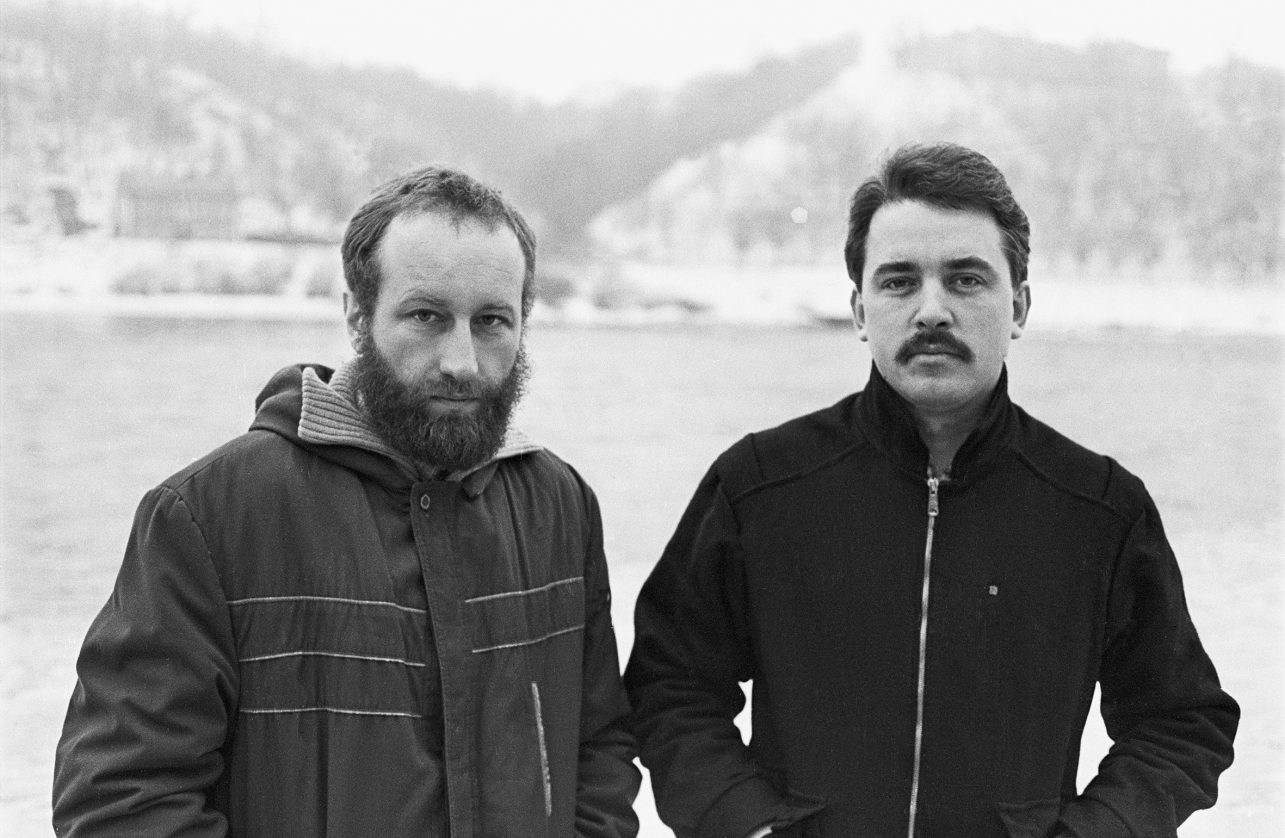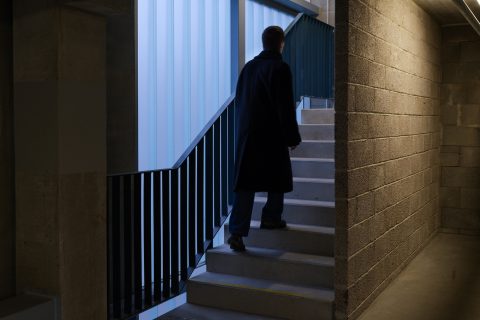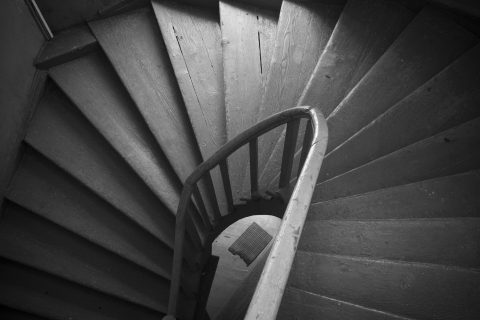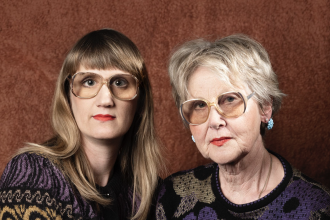At the end of the year, Kaunas Photography Gallery transformed into a photography salon. The salon serves as a place for professional confessions, long conversations, and unexpected plot twists – things that have been missing in the public space for some time.
The group exhibition/fair, which was organized for the holidays in the gallery, was running until January 21. If you did not find any works by Antanas Sutkus, Violeta Bubelytė, and Romualdas Rakauskas under a Christmas tree, you could still gift them to yourself on the occasion of the upcoming spring. Works by Virgilijus Šonta and Romualdas Požerskis were also featured among others in the salon. You can find Šonta’s freedom which has escaped shackles and the frozen time of the old city that no longer exists but was captured by Požerskis. Motorcycles, Faith. Shots that have immortalized several decades of the movement toward independent Lithuania; a unique and brief history of our liberation, written down after looking around in the margins.
Gintaras Česonis, the head of the gallery, who invited everyone to the salon on December 19, at the beginning of the event revealed that this juxtaposition of Šonta and Požerskis did not happen on purpose, “Only afterward did we find out that exactly 50 years ago, yesterday, their first exhibition was held.” Tomas Pabedinskas helped Romualdas Požerskis, the guest of the salon, to talk about 1973 and the surrounding years and remember his friend and comrade, their ambitions, and challenges. The cameras kept clicking during the live chat as if it was a very important press conference where relevant news was announced. This is a fascinating detail that is characteristic of photography enthusiast gatherings: nothing will be left undocumented – on the contrary, the event will be immortalized in a wide variety of angles using different techniques.
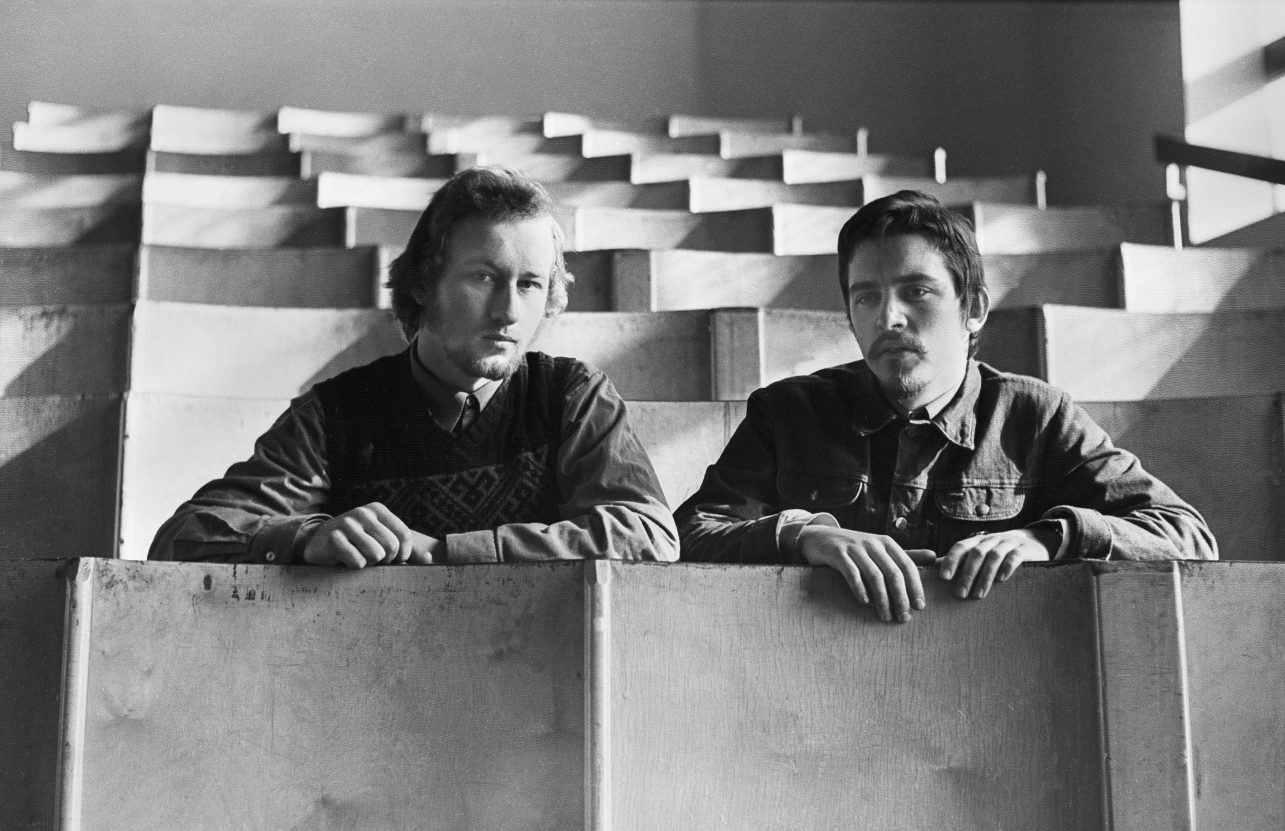
Požerskis is still active and important in the field of photography half a century after that fateful double debut. He organizes exhibitions and teaches. Šonta’s career lasted only 19 years (he was murdered in his studio in the capital in 1992). It is obvious to today’s art critics that during that time he communicated much more through his photographs than most people do in their entire lifetimes.
The two students at the Kaunas Polytechnic Institute at the time were introduced by a mutual acquaintance: Romualdas’ 4th year course mate. “One day, my course mate Skiparis told me that he has a friend, who is interested in photography. It was International Student Day (November 17, ed.). he brought Virgis, and we did a photo shoot at home. We took photos together with our muses. We started talking about photography: what should we do? Because we really liked this branch of art. He then suggested we hold an exhibition,” Požerskis remembers the events of 1973 in detail. According to him, the exhibition organized by Kaunas Polytechnic Institute was, “very basic.”
Kaunas resident, who was born in Vilnius, talks about the transformation of his life sparingly, but captivatingly. This might be a trait of all good photographers: the ability to convey everything in the blink of an eye. “It consisted of my travels and Šonta’s montages. The exhibition was visited by a handful of people. Mostly other students, our course mates. The photographs were then distributed and gifted. Every fact of life is interesting. After all, the first satellite that flew around the world was simply an iron ball, with only one signal beeping. This exhibition was the start of what we have now. There was a desire for it and that comes with maturity. There are two births in life – one birth is physical, and the second is spiritual. The spiritual one happens when you ask: what do I live for? What motivates me, what do I want to say? Why am I in this world? Our second birth was when Virgilijus Šonta and I met.”
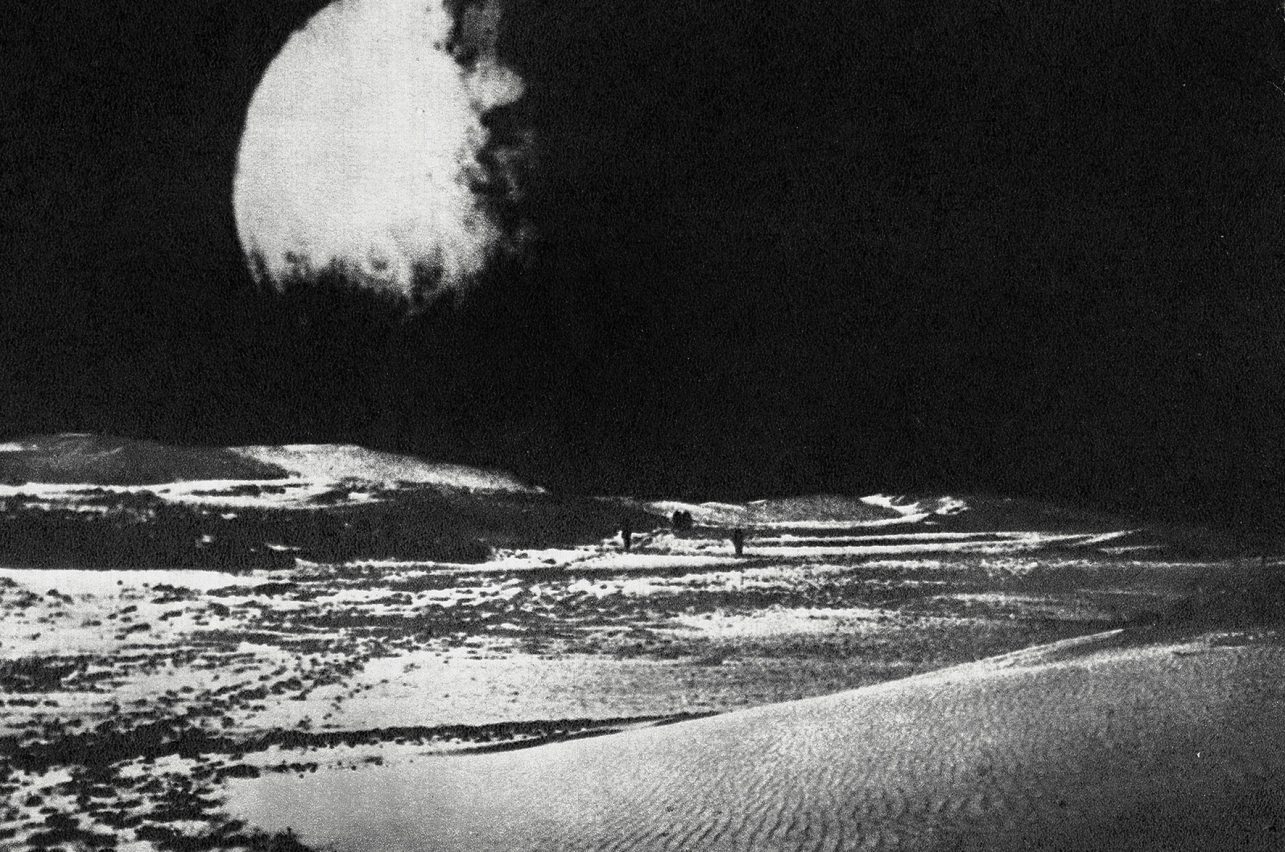
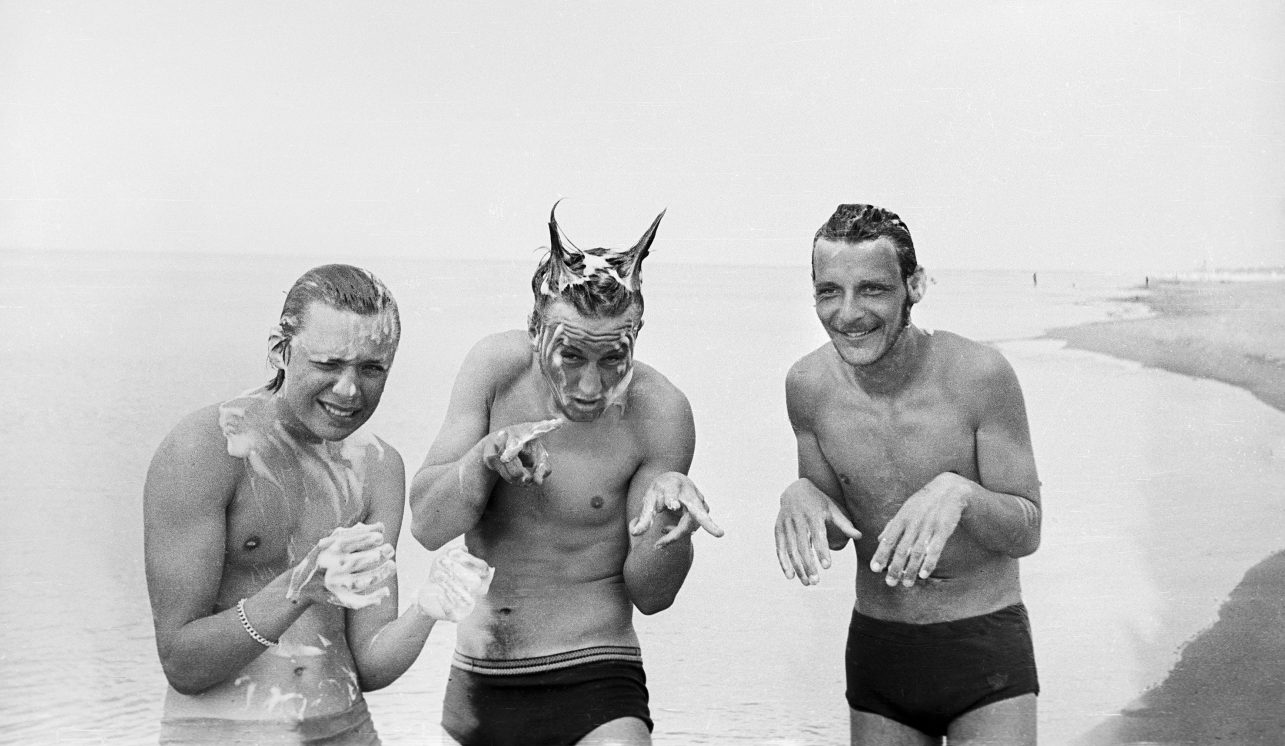
A representative of an even older generation, Aleksandras Macijauskas, also visited the photography salon for the golden evening. He agreed to share some observations about how fifty years ago when he was already in his mid-thirties, he saw the young people of that time. It turns out that Antanas Sutkus, the initiator and long-time leader of the Lithuanian Photographic Art Society, had the following instruction: to support as many young people as possible, “And I kept saying that we don’t need to look for the young talents. Real talent will find their way and come on their own. The best examples of this were Romas and Virgis. I felt that Požerskis would be a great photographer.”
After the first exhibition, Šonta and Požerskis started to travel together. “We started traveling around Lithuania and photographing everything that came across. It was great traveling with Šonta because I wasn’t good at photographing the things he did and he was not capable of photographing the things that I did,” the photographer remembers. At first, both of them photographed church festivals but eventually realized that this subject should be taken up by only one of them. Šonta decided that it was difficult for him to photograph those people and look for a connection, so church festivals went to Požerskis. “Macijauskas once said: if someone is photographing some theme, for example, movement, you should stay away and let that person work in peace. Because, for example, Macijauskas goes to the market, and other photographers see that he has done good work, they run to that market and take pictures there as well.”
The motif of the road is important here. “In 1972, I bought a motorcycle, a Jawa. A friend helped me. And we started life on the road. Our whole life is on the road, both literally and figuratively. We read Kerouac’s On the Road, it was our bible. I wrote a diary, which was later discovered by Tomas Pabedinskas,” Požerskis says while looking at his younger colleague, art critic, and one of the authors of Perspektyva TV show. At this point, the host of the evening must get into the role of a storyteller.
From the diary of R. Požerskis:
December 13, 1973. Today is a memorable day. No, it will not be marked in the biography, no one will know about it, but for Virgilijus and I, this is the day of rising above meaninglessness.
Virgis and I want to open our own exhibition. This is amazing, we are entering a new phase. We already have something to show other people. We explore beauty, try to get to know it, capture it, and show it. Of course, we are very green, our technical execution is terrible, and the artistic level is still rather low.
December 18, 1973. I opened the exhibition. Hoorah!!! Hip hip hooray! Virgis Šonta and I have achieved our goal and are exhibiting over 50 photos. This is a huge achievement for us and a memory for life. Now we must reach for new heights, have better technique, and be more artistic. Hoorah!
December 19, 1973. What shocks me the most is the interference with a person’s freedom.
“Those first photos appeared to me to be completely different from Romualdas’ well-known work, but at the same time seemed very real and authentic. It was clear that at the time Romualdas took photos of his life as a simple person rather than a photographer. Very interesting times with vibrant images and a different way of life than we are used to today as well as the relationship with the other – already well-known – work of Romualdas; how did it change? I found it very interesting, both from a documentary and creative point of view, how this change took place,” Tomas Pabedinskas said. You could see the results of this research in exhibitions or Neramūs keliautojai (restless travelers) album.
I am curious how the photographer was able to find inspiration, learn, and follow trends in the black-and-white reality of the occupied country. “There was almost zero information, only one magazine in the entire Union – Sovetskoje foto – in which, 90 percent was ideological photographs: collective farms, workers and the like,” Požerskis explains. The Šiauliai Museum of Photography had many different magazines and they would let young people into the archives where they could spend all day because the hunger for information was great. But when you don’t have a lot of information, you don’t see many things created by other people, so there is more incentive to try and reinvent your own bicycle. Such thoughts would make the work of today’s trendsetters participating in the Instagram race much more difficult.
What else did the first exhibition, which took place just a month after they met, give Požerskis and Šonta? “We were noticed by Nemunas, which published some information about us. Virginija fell in love with me from a photo and became my wife and the mother of my children. This small photograph in Nemunas changed our lives,” the photographer said. Virginija Požerskienė died in 2017.
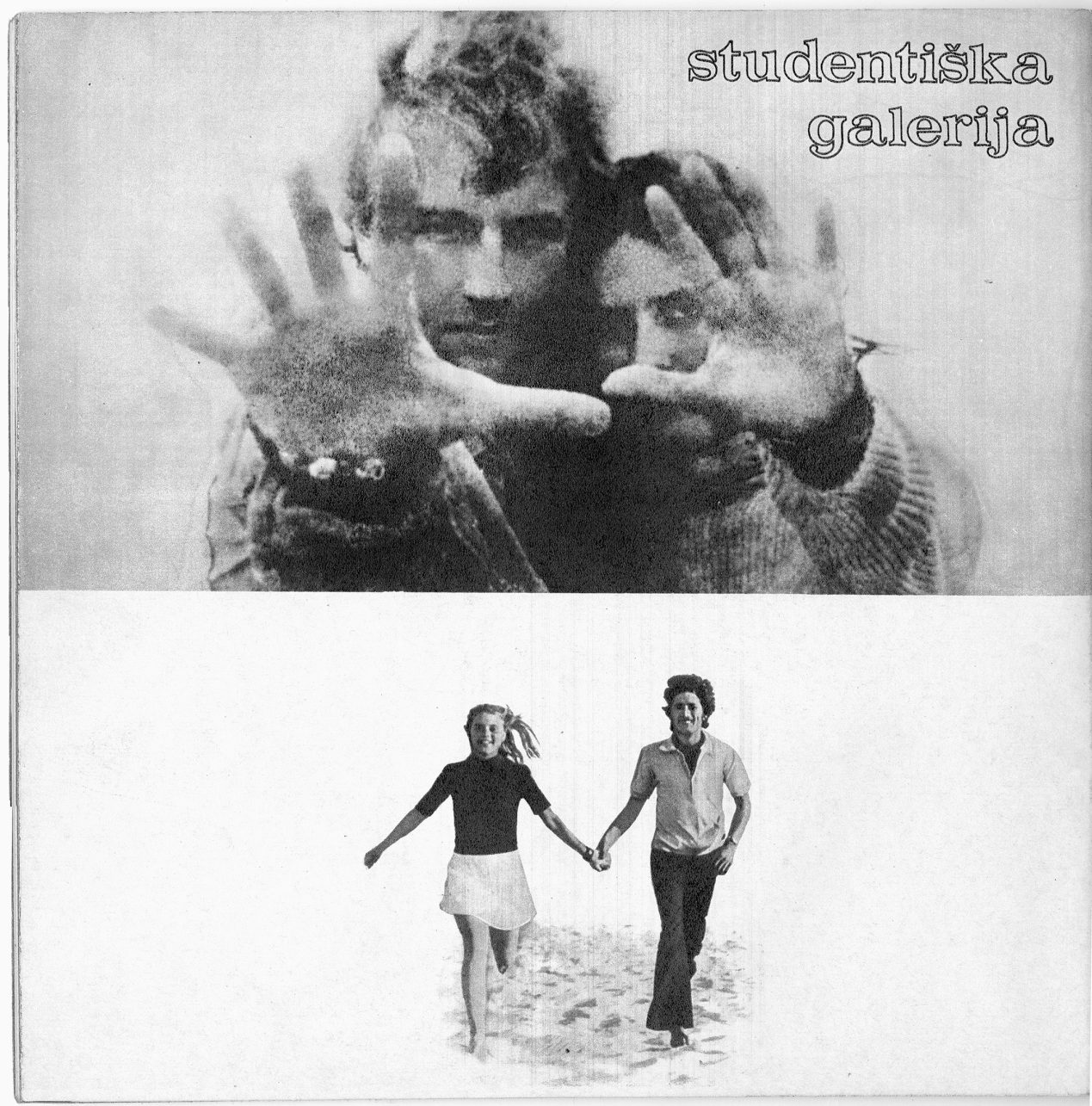
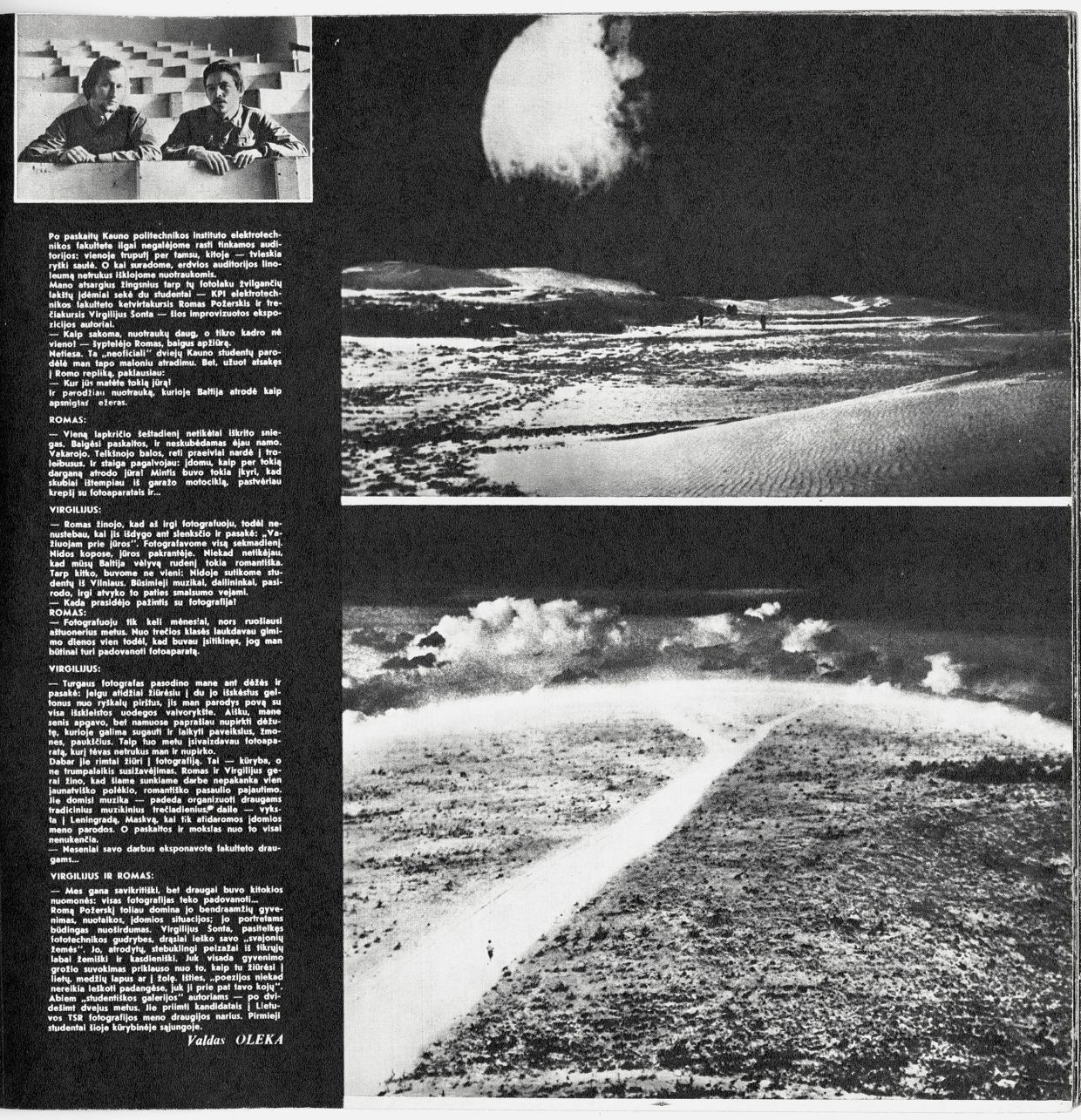
Another achievement, a big step and event in Lithuanian photography was the first exhibition of young Lithuanian photographers held in 1977. Požerskis went to Berlin to open it, it was his first trip abroad. Both budding photographers were hired by Inturistas, the only official travel agency of the USSR. They traveled through cities that could be visited by citizens of friendly countries. They went to Kazan, Ashgabat, Bukhara, the Tian Shan Mountains, and Transcaucasia. “We had a bag full of Kodak material. We had a falling out and then became friends again. Šonta was 24 and I was 25.”
Then, two independent stories of two photographers followed.
